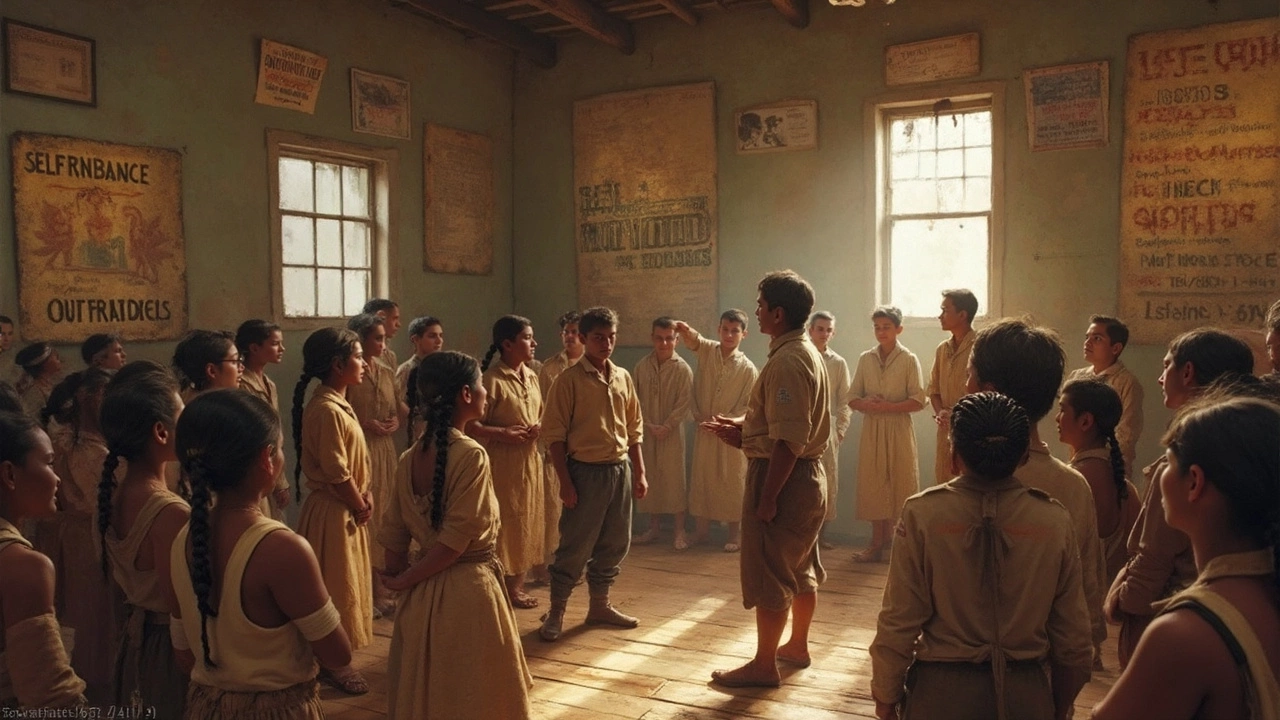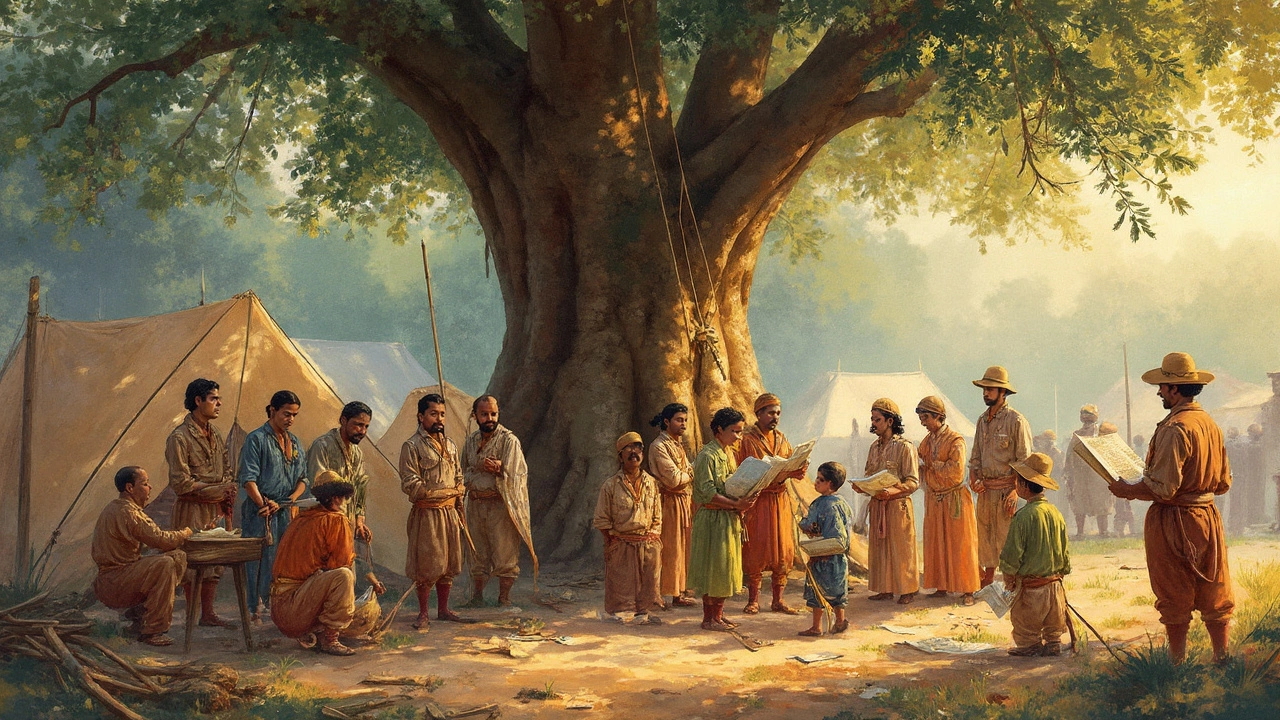The idea of organized youth groups might sound modern, but kids and teens have banded together way before Instagram or official clubs. At first, there weren’t any formal youth organizations—there were just kids doing chores, learning trades, and, if they had time, kicking a ball around outside. No structure. No “badge nights.”
So, who kicked off the very first official youth organization? That honor usually goes to The Boys’ Brigade, started in Glasgow, Scotland, in 1883 by William Alexander Smith. He saw a bunch of restless boys at church and figured some structure and teamwork could help keep them out of trouble. Picture uniforms, marching, and Bible lessons all rolled together. This was ages before the Boy Scouts even existed.
- Before Formal Groups: What Did Youth Do?
- Birth of the First Real Youth Organization
- The Early Days: Who Joined and Why
- What We Can Learn From History Today
Before Formal Groups: What Did Youth Do?
Way before anyone thought of forming a youth organization, young people mostly followed the routines of their families and local communities. Their main jobs? Help around the house, work on the farm, or pick up whatever trade the adults had. If you were a kid in the 1800s, you’d probably spend more time hauling water or feeding animals than playing games with friends.
School wasn’t a given for everyone. In places like rural Scotland, England, or the U.S., only some kids went to school for real, and most finished up by their early teens. Once they were done with basic learning, it was straight to work or an apprenticeship—say, learning how to fix shoes, carve wood, or help run a shop. There was no hanging out at youth centers or planned group outings with leaders.
Kids and teens did have ways to connect with each other, but usually it was through family, church, or small chores after Sunday services. If there was something like a local club, it wasn’t meant just for youth. Adults pretty much ran everything, and kids just tagged along if they were allowed.
Youth groups for sports, arts, or music were pretty rare. Informal soccer matches or music circles happened, but there were no regular schedules, no central place, and definitely no matching shirts. Everything relied on adults’ permission and whatever time was left after work.
| Year | Common Youth Activities |
|---|---|
| 1850 | Chores, helping with farm work, church events |
| 1870 | Apprenticeships, small-town gatherings, holiday fairs |
| 1880 | Street games, early school clubs (very rare) |
So, before the first real youth organization came along, there wasn’t any real structure for young people outside of what adults demanded. The whole concept of “youth having their own space” just didn’t exist yet.
Birth of the First Real Youth Organization
So let’s get into how the world’s first real youth organization actually started. We’re talking about The Boys’ Brigade, launched back in 1883 by William Alexander Smith in Glasgow, Scotland. It wasn’t just an after-school hangout—Smith wanted to give teenage boys skills, discipline, and a sense of purpose. He mixed church, military-style drills, and outdoor fun, turning what a lot of parents saw as chaos into something way more positive.
Here’s what set The Boys’ Brigade apart from anything before it:
- Uniforms: The kids showed up wearing matching hats and sashes. Right away, this made them feel like part of a team.
- Drills and marching: Picture kids in lines instead of just running wild. Smith believed routine made the boys more confident and respectful.
- Bible study and character lessons: It wasn’t just about physical activity—helping the boys grow up with values was a big thing.
Before this, nothing was really organized for young people on such a large scale. Smith actually based his plan off ideas he picked up from the British Army, where drills and group work were common.
| Year Founded | Location | Membership (by 1887) |
|---|---|---|
| 1883 | Glasgow, Scotland | 2,000 |
That’s pretty wild growth: from zero to 2,000 members in just four years. Shows you how much the boys—and their parents—wanted something structured. The movement spread all over the UK, then abroad. It didn’t take long for spin-offs like the Scouting movement to pop up too.
“To advance Christ’s kingdom among boys and promote habits of obedience, reverence, discipline, self-respect, and all that tends toward a true Christian manliness.”
– William Alexander Smith, founder of The Boys’ Brigade
The youth organization blueprint was officially set. Within a couple decades, there were clubs and brigades everywhere, and the idea of structured, positive group activity for kids caught on worldwide.

The Early Days: Who Joined and Why
Back when youth organizations were just getting started, it was mostly teenage boys who signed up first, especially in working-class cities like Glasgow. The Boys’ Brigade—considered the oldest—aimed to help boys from busy, often tough neighborhoods learn a bit of discipline and teamwork. Most of these kids went to church with their families and spent their free time on the streets, so the promise of activities, badges, and just having something to belong to was a big deal.
Fun fact: Within the first two years, over 2,000 boys joined The Boys’ Brigade, and by 1910, that number had climbed past 50,000 in the UK alone. Many families liked that it kept their sons busy on evenings and weekends, away from trouble and future mistakes. Plus, uniforms and ranks weren’t just for looks—they made kids feel proud and like they were part of something bigger.
The reasons to join usually boiled down to a mix of boredom, the need for friends, and old-school peer pressure. Since a lot of early youth groups worked closely with churches or schools, it was easy for kids to tag along with neighbors or siblings. For some, these clubs were the first space where adults actually listened to their ideas.
As for girls, most of the early groups ignored them at first. It wasn’t until the late 1800s that the Girls’ Brigade started in Ireland (1893), following the model but adapting activities for young women. The Girl Guides (what we call Girl Scouts in the U.S.) wouldn’t pop up until 1910.
Here’s a simple look at club membership back then:
| Year | Boys' Brigade UK Membership |
|---|---|
| 1883 | 35 (founding year) |
| 1885 | 2,000+ |
| 1910 | 50,000+ |
By making kids feel included and giving them a clear path to belong, early youth organizations set a pattern we still follow now—structure, a safe place to hang out, and a reason to show up.
What We Can Learn From History Today
If you take a close look at the roots of the youth organization, you’ll notice something basic but powerful: structure and shared values made these groups successful. The Boys’ Brigade didn’t last over a century just because they wore uniforms. The real draw was the sense of belonging and purpose. Kids aren’t so different today—they still want to feel part of something, learn new things, and especially have fun with friends while doing it.
The big takeaway? When you start or join a youth group now—whether it’s Scouts, a coding club, or even just a group of friends doing clean-ups—structure matters. Meetings with plans, games, and recognition, like badges or awards, help keep kids engaged. It’s proven. Even after 140 years, the basic formula used by those early groups keeps working for today’s youth groups.
But it’s not all old-school thinking. A lot of the best youth organizations right now have mixed in topics like mental health, environmental action, and tech skills. For example, the World Organization of the Scout Movement now includes over 170 countries and focuses as much on leadership and innovation as it does on outdoorsy stuff. Here’s a look at how today’s youth groups keep things fresh:
- Blend old and new: Keep traditions like group activities while teaching digital skills or climate science.
- Focus on inclusion: Invite all kinds of kids, regardless of background or ability.
- Set simple, clear goals: People feel motivated when they see progress and get credit for hard work.
- Stay flexible: Youth interests change fast—adapt the program as you go.
One thing parents forget: Youth organizations aren’t just social time. They actually build key life skills. According to a 2023 study by Child Trends, kids active in structured youth organizations showed higher self-esteem and did better in school on average than those who weren’t involved.
| Benefit | Percent of Kids Who Show This |
|---|---|
| Higher self-esteem | 68% |
| Improved teamwork | 72% |
| Better school performance | 61% |
If you’re thinking of getting your child (or yourself) into a group, try looking for those that mix old school bonding with new skills. That mix is what has kept youth organizations going strong for over a century—and still matters a ton today.
